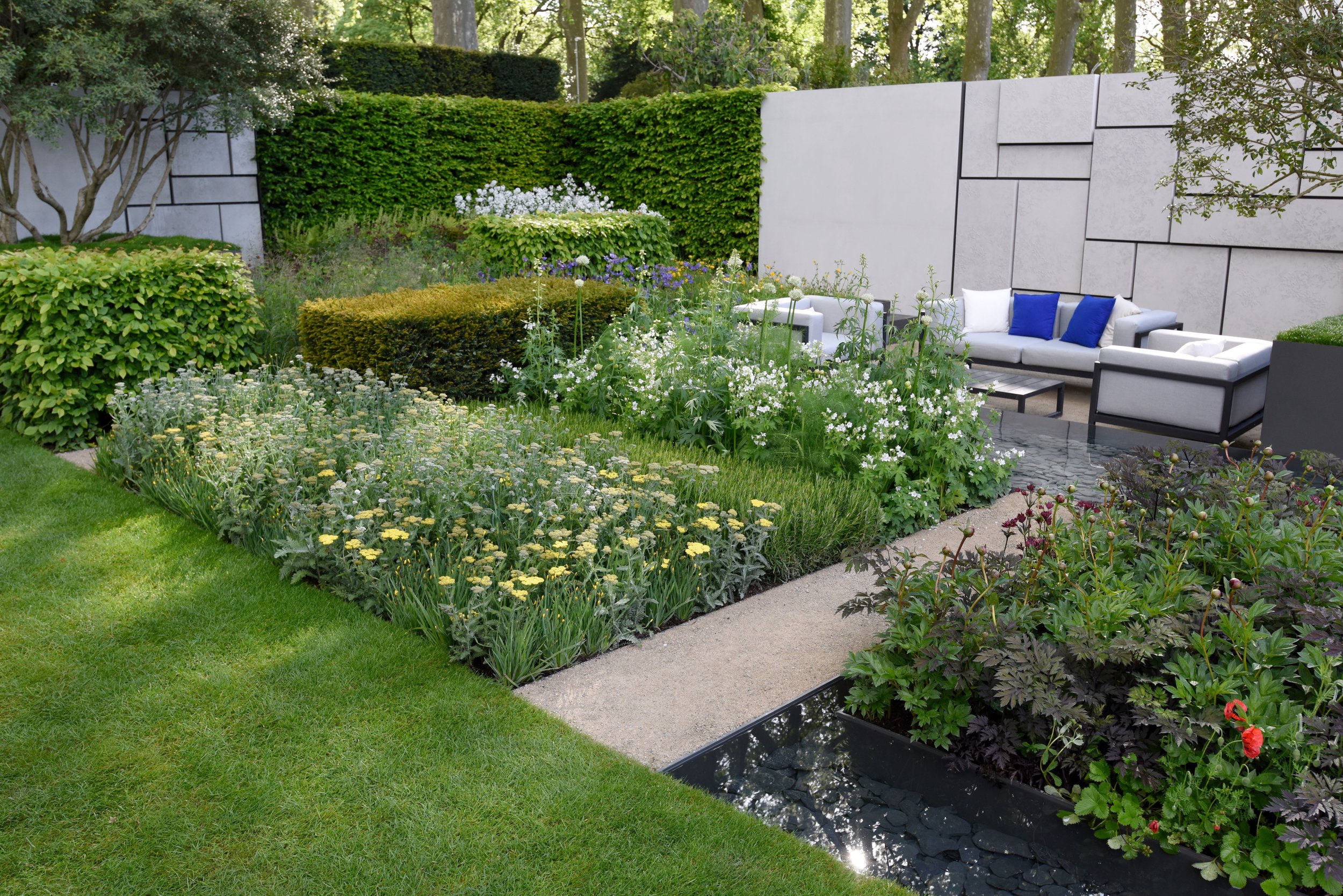Many New Yorkers dream of outdoor space, but reality can fall short. Neglected gardens, overgrown with weeds and junk, are often the norm. Feeling overwhelmed? This post will kickstart your journey to a beautiful urban oasis. We'll break down the planning process into manageable steps, helping you envision your dream garden. Stay tuned for future posts delving deeper into the landscape design process!
This Noho roof garden gives you a space to take it all in
1. Step Into Your Space and Take a Deep Breath
Begin by simply spending time in your outdoor space. Can you see the garden, or is there so much growth, you can’t tell what is on the ground plane? Clear the surface mess, leaving any shrubs or trees, and focus on removing enough weeds and debris. Removing unwanted plants and objects will help you see your garden’s potential. Immersing yourself in your garden allows you to grasp its unique characteristics, such as light patterns, drainage issues, and wind variations. Pull up a chair and sit with a good book, noting how sunlight travels across the page. Capture these insights by taking photographs at different times of the day and throughout the seasons, so you can refer back to them during the design process.
Observe your garden after a heavy rain, and take note if there are any areas where water pools. Managing stormwater will be an important part of creating a garden that lasts for generations. While you will likely already be familiar with your area’s climate, your garden will have its own unique micro-climate. Enjoying time in your outdoor space throughout the seasons will help you recognize areas that are particularly exposed or sheltered, and these are important determinants in both plant choices and how you want to use these spaces.
If you yard looks like this: lay out a blanket, and move it around to find your favorite future lounging spot
2. Identify Wants and Needs
Compile a list of your wants and needs for the garden. Consider elements such as seating areas, play spaces for children, a place for grilling, or specific features like an herb garden. Your needs will serve as the foundation for your design, dictating layout and functionality. For instance, if child supervision is a priority, you'll want to position play areas within sightlines from indoors. Over time, your preferences may evolve, influencing the design direction.
3. Assess Opportunities and Constraints
In landscape design, we call this stage site analysis, and it involves listing the pros and cons of a space. The language I find most helpful focuses on constraints and opportunities. Both drive the design of the space and it’s these individual site characteristics that make each design unique. An opportunity might be a special borrowed view. A borrowed view refers to a distant or neighboring landscape feature, such as a natural element or architectural structure, that is intentionally incorporated into the design of an outdoor space. For example, Brooklyn is home to several beautifully preserved gothic churches. If your yard is within view of one of these churches and their enormous rose windows, you will likely want to preserve this borrowed view. A constraint could be an unsightly view. If your outdoor space is on the roof, you’ll likely have air conditioning condensers that are both loud and unattractive. You’ll want to hide them with layered plantings or creative fencing. List all the site’s challenges and see them as opportunities for creative solutions.
Every year, the Chelsea Flower Show gardens inspires with their stunning, temporary, displays.
4. Gather Inspiration
Collect images of gardens and outdoor spaces that resonate with you. Explore plant options suitable for your garden's conditions, whether it's full sun or deep shade. Use these visuals to refine your aesthetic preferences and communicate your vision to landscape professionals if needed. At Todd Haiman Landscape Design, we find it very helpful to receive inspiration imagery from a client. These images give us a sense of the client’s aesthetic and goals for their own space.
5. Plan Your Pathways
A mowed path in Hampstead, UK
Design pathways to connect different areas of your garden. Whether it's a straight line of pavers or a meandering gravel path, each route presents an opportunity to enhance user experience and add character to your garden. Consider how you want to navigate through the space and connect various garden "rooms" to create a cohesive layout.
6. Be a Garden Tourist
More small-scale, high-impact designs from the Chelsea Flower Show.
Immerse yourself in local parks, botanic gardens, and landscaped spaces to gain inspiration and insights into plant choices and design techniques. Observing well-designed gardens will help refine your tastes and bring you closer to realizing your garden sanctuary.
By following these initial steps, you'll lay a foundation for planning and designing your dream garden. Embrace the process with curiosity and creativity, and soon you'll be enjoying the fruits of your labor in your own outdoor haven.





